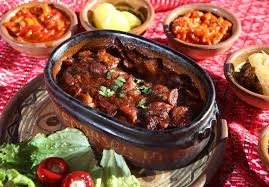North Macedonia, situated in the heart of the Balkan Peninsula, is a country that boasts a rich history, diverse culture, and stunning natural beauty. With its picturesque landscapes, historical landmarks, and warm hospitality, North Macedonia offers a unique blend of tradition and modernity. This blog will delve into various aspects of North Macedonia, including its geography, states, history, culture, cuisine, must-visit destinations, economy, and future perspectives.
Table of Contents
Geography of North Macedonia
North Macedonia is a landlocked country located in Southeast Europe, bordered by Kosovo to the north, Serbia to the northeast, Bulgaria to the east, Greece to the south, and Albania to the west. The country covers an area of approximately 25,713 square kilometers. Its geography is characterized by mountainous terrain, valleys, and several lakes, with the most notable being Lake Ohrid, which is one of the oldest and deepest lakes in Europe. The Šar Mountains dominate the western region, providing breathtaking views and opportunities for outdoor activities.
The climate in North Macedonia is predominantly continental, with hot summers and cold winters. This diverse geography, along with its favorable climate, contributes to the country’s rich biodiversity and agricultural productivity. The terrain is predominantly mountainous, with around 80% of the country covered in hills and mountains. The Vardar River, the longest river in North Macedonia, flows through the country from north to south and plays a crucial role in the local ecosystem.
The lakes in North Macedonia are not only significant for their natural beauty but also for their ecological importance. Lake Ohrid, for instance, is a UNESCO World Heritage site and is home to numerous endemic species. The lake’s clear waters make it a popular destination for swimming, boating, and fishing, attracting both locals and tourists. Other significant bodies of water include Lake Prespa, which is shared with Albania and Greece, and Lake Ohrid, which offers a unique blend of biodiversity and recreational opportunities.
States of North Macedonia
| No | Name | Capital |
|---|---|---|
| 1 | Vardar Region | Skopje |
| 2 | Eastern Region | Štip |
| 3 | Pirin Region | Bitola |
| 4 | Southwest Region | Ohrid |
| 5 | Pelagonia Region | Prilep |
| 6 | Polog Region | Tetovo |
| 7 | Skopje Region | Skopje |
| 8 | Northeastern Region | Kumanovo |
| 9 | Southeastern Region | Strumica |
A Brief History of North Macedonia
North Macedonia has a rich historical background that dates back to ancient times. The region was once part of the kingdom of Paeonia and later the Macedonian kingdom, famously ruled by Alexander the Great. Throughout its history, North Macedonia has experienced various influences, from the Roman and Byzantine empires to Ottoman rule, each leaving a lasting mark on its culture and heritage.
In the ancient era, the territory of present-day North Macedonia was inhabited by various tribes, including the Paeonians, Illyrians, and Thracians. The rise of the Macedonian kingdom in the 4th century BC marked a significant period in history, especially with the emergence of Alexander the Great, who expanded the empire across three continents.
During the Roman period, the region was integrated into the Roman Empire and later the Byzantine Empire. The spread of Christianity brought significant cultural changes, leading to the construction of numerous churches and monasteries, many of which still stand today as testaments to the country’s rich spiritual heritage.
In the 14th century, the Ottomans conquered the region, leading to nearly five centuries of Ottoman rule. This period greatly influenced North Macedonia’s culture, architecture, and daily life. The Ottoman legacy is evident in the numerous mosques, bazaars, and traditional crafts that still thrive today.
In the 20th century, North Macedonia became part of the Kingdom of Serbs, Croats, and Slovenes, later known as Yugoslavia. The country declared independence in 1991 following the disintegration of Yugoslavia. However, it faced challenges related to its name, which led to a prolonged dispute with Greece. The Prespa Agreement in 2018 resolved this issue, allowing North Macedonia to officially adopt its name and move forward in its aspirations for NATO and EU membership.
The country continues to navigate its path toward European integration, with efforts aimed at improving governance, strengthening democracy, and promoting economic development. North Macedonia’s rich history is not only a source of national pride but also a critical factor in shaping its identity and aspirations for the future.
Top Ten Most Famous Places to Visit in North Macedonia
- Ohrid

Ohrid is a UNESCO World Heritage site, known for its stunning lake and rich historical significance. The town is dotted with ancient churches, monasteries, and a picturesque old town. Visitors can explore the Ohrid Fortress, enjoy boat rides on Lake Ohrid, and relax on its beautiful beaches. The vibrant atmosphere during the summer months attracts tourists seeking both culture and relaxation.
The town is also famous for its cultural heritage, with events such as the Ohrid Summer Festival showcasing music, theater, and dance performances. The surrounding natural beauty, with hills and forests, provides ample opportunities for hiking and exploring the stunning landscapes that frame the lake.
- Skopje

As the capital city, Skopje offers a mix of modernity and tradition. The Stone Bridge, a symbol of the city, connects the old and new parts. The Old Bazaar is filled with shops, cafes, and historic buildings, showcasing the city’s Ottoman heritage. The Millennium Cross, perched on Mount Vodno, offers panoramic views of Skopje and the surrounding landscapes.
Skopje’s architecture is a blend of various styles, reflecting its tumultuous history. The city is home to numerous museums, including the Museum of Macedonia, which provides insights into the region’s rich history and cultural heritage. The vibrant nightlife, bustling markets, and diverse culinary scene make Skopje an exciting destination for travelers.
- Bitola

Bitola is known for its well-preserved architecture and historical significance. The city features the ancient ruins of Heraclea Lyncestis, where visitors can explore Roman mosaics and the remnants of a theater. The city’s vibrant streets are perfect for leisurely strolls, with numerous cafes and restaurants offering local delicacies.
Bitola is also known for its cultural events and festivals, including the Bitola Festival of Comedy, which attracts performers from around the world. The city’s rich cultural scene, combined with its historical landmarks, makes it a captivating destination for those interested in the arts and history.
- Lake Ohrid

Lake Ohrid, one of the oldest and deepest lakes in Europe, is a natural wonder that attracts nature lovers and adventure seekers. The crystal-clear waters are ideal for swimming, kayaking, and diving. Surrounding the lake are charming villages, offering opportunities for hiking and enjoying breathtaking views.
The lake is renowned for its biodiversity, with numerous endemic species, including the famous Ohrid trout. Visitors can also explore the nearby monasteries and churches that dot the lakeshore, adding a spiritual dimension to the natural beauty of the area.
- Mavrovo National Park

Mavrovo National Park is a haven for outdoor enthusiasts, featuring picturesque landscapes, dense forests, and diverse wildlife. The park offers hiking trails, skiing in winter, and opportunities for birdwatching. The stunning Mavrovo Lake within the park is a perfect spot for picnicking and relaxation.
The park is home to various species, including wolves, bears, and numerous bird species, making it an ideal destination for nature lovers. Visitors can also engage in activities like horseback riding and mountain biking, allowing them to fully immerse themselves in the natural beauty of the region.
- Kumanovo

Kumanovo is known for its vibrant cultural scene and historical sites. The city hosts various events and festivals throughout the year, showcasing local traditions and music. The Kumanovo Fortress and the nearby archaeological site of Pustec provide insights into the region’s history.
Kumanovo’s dynamic atmosphere is complemented by its rich culinary scene, offering visitors a chance to taste traditional Macedonian dishes. The city’s location near the borders of Kosovo and Serbia also makes it a culturally diverse destination, reflecting influences from neighboring countries.
- Tikveš Wine Region

The Tikveš Wine Region is famous for its vineyards and wineries, making it a must-visit for wine enthusiasts. Visitors can tour the wineries, sample local wines, and learn about the winemaking process. The beautiful landscapes of rolling hills and grapevines enhance the experience.
The region hosts wine festivals and events, attracting both locals and tourists eager to experience North Macedonia’s wine culture. Tikveš wines are gaining recognition on the international stage, with varieties such as Vranec and Kratosija showcasing the country’s winemaking heritage.
- Stobi

Stobi is an ancient city that boasts well-preserved Roman ruins, including a theater, mosaics, and early Christian basilicas. The archaeological site offers a glimpse into the region’s history, and guided tours provide insights into the significance of this ancient settlement.
Stobi’s historical importance is underscored by its strategic location along the ancient trade routes. The site is a testament to the region’s cultural diversity, with influences from Roman, Byzantine, and early Christian civilizations evident in its architecture.
- Kozjak Lake

Kozjak Lake is a picturesque lake surrounded by mountains, ideal for relaxation and outdoor activities. Visitors can enjoy boating, fishing, and hiking along the scenic trails. The serene atmosphere makes it a perfect getaway for those seeking tranquility.
The lake’s stunning views provide a picturesque backdrop for picnics and family outings. The surrounding area offers opportunities for hiking and exploring the natural beauty of the Macedonian countryside, making it a popular destination for nature lovers.
- Pelister National Park

Pelister National Park is known for its unique flora and fauna, including the endemic Pelister Pine. The park offers hiking trails, opportunities for wildlife observation, and stunning views of the surrounding mountains. The park’s natural beauty makes it a popular destination for nature lovers.
Pelister’s diverse ecosystems, ranging from alpine meadows to dense forests, provide a habitat for various wildlife species. Visitors can explore the park’s trails, discover hidden waterfalls, and experience the tranquility of this untouched natural environment.
Cuisine of North Macedonia
The cuisine of North Macedonia is a delightful blend of Mediterranean and Balkan flavors, characterized by its hearty dishes made from fresh, local ingredients. Meals often feature grilled meats, fresh vegetables, and a variety of dairy products. The use of spices and herbs enhances the flavors, creating a unique culinary experience.
Dishes are often prepared with a focus on seasonal ingredients, making the cuisine both diverse and flavorful. North Macedonia is also known for its wine production, with vineyards thriving in its fertile regions.
Local markets are bustling with fresh produce, where visitors can sample seasonal fruits and vegetables, as well as traditional delicacies. The emphasis on local ingredients and time-honored recipes ensures that each meal is a reflection of the country’s culinary heritage.
Top Eight Most Famous Foods of North Macedonia








The culinary traditions of North Macedonia reflect the country’s rich cultural tapestry, with influences from neighboring countries and a focus on fresh, high-quality ingredients. Whether dining in a local restaurant or enjoying a home-cooked meal, the flavors of North Macedonia are sure to leave a lasting impression.
Economy of North Macedonia
North Macedonia’s economy is characterized by its diverse sectors, including agriculture, manufacturing, and services. Agriculture plays a significant role, with the country producing fruits, vegetables, and tobacco. The manufacturing sector includes textiles, automotive parts, and food processing.
Tourism has become an increasingly important part of the economy, with North Macedonia’s natural beauty and cultural heritage attracting visitors from around the world. The government is working to improve infrastructure and promote tourism to further boost economic growth.
In recent years, North Macedonia has implemented various economic reforms aimed at improving the business climate and attracting foreign investment. The establishment of free economic zones has encouraged local and foreign companies to set up operations in the country. Additionally, the government is investing in renewable energy projects, aiming to diversify its energy sources and reduce dependency on fossil fuels.
The labor market in North Macedonia faces challenges, including a high unemployment rate, particularly among youth. However, efforts are being made to enhance vocational training and education, ensuring that the workforce is equipped with the skills needed for the evolving job market.
North Macedonia’s strategic location at the crossroads of Europe and the Balkans presents significant opportunities for trade and investment. The country is working to strengthen its regional partnerships and expand its market access, further integrating into European and global economies.
Future Perspectives of North Macedonia
The future of North Macedonia is shaped by its aspirations for European integration and economic development. The government is committed to strengthening its institutions and improving the standard of living for its citizens. Efforts to join the European Union are ongoing, and the country aims to enhance its economy and attract foreign investment.
Sustainable tourism practices are also a focus, ensuring that North Macedonia’s natural landscapes and cultural heritage are preserved for future generations. The government is promoting eco-friendly initiatives and responsible tourism to safeguard the environment while fostering economic growth.
In addition to tourism, North Macedonia is investing in education and technology to foster innovation and entrepreneurship. By promoting research and development, the country aims to create a knowledge-based economy that can compete on a global scale.
Cultural preservation is another important aspect of North Macedonia’s future. The government is committed to promoting its rich heritage, supporting cultural institutions, and encouraging the arts. Events such as festivals, exhibitions, and educational programs play a crucial role in preserving the country’s identity and fostering cultural exchange.
With its strategic location, rich resources, and potential for growth, North Macedonia is poised for a promising future. The combination of a rich cultural heritage, a diverse economy, and a commitment to sustainability positions the country as a vibrant destination for both tourists and investors.
Conclusion
North Macedonia is a captivating country that offers a wealth of experiences for travelers, blending rich history, diverse culture, and stunning natural beauty. From the ancient streets of Ohrid to the vibrant atmosphere of Skopje, there is much to explore and enjoy. The warm hospitality of the Macedonian people, combined with the country’s unique traditions and delicious cuisine, ensures that visitors leave with unforgettable memories.
As North Macedonia navigates its path toward European integration and economic development, it remains committed to preserving its cultural heritage and natural beauty. Whether you’re drawn to its historical landmarks, lively festivals, or culinary delights, North Macedonia promises a journey filled with discovery and enchantment.

